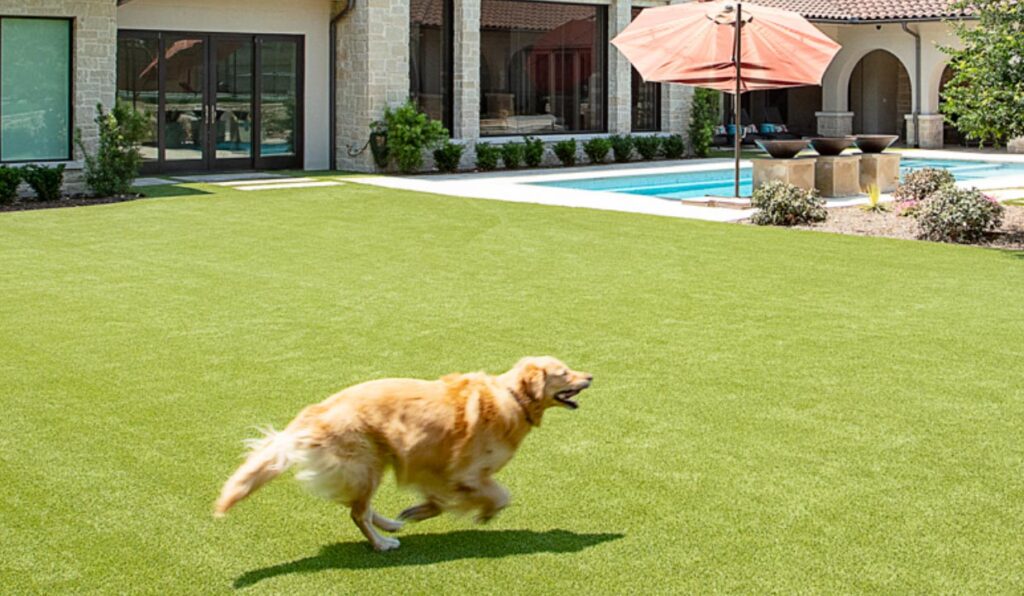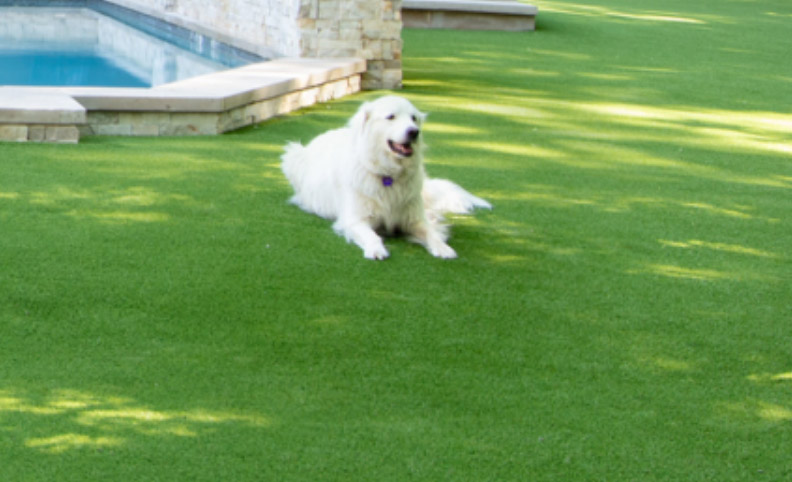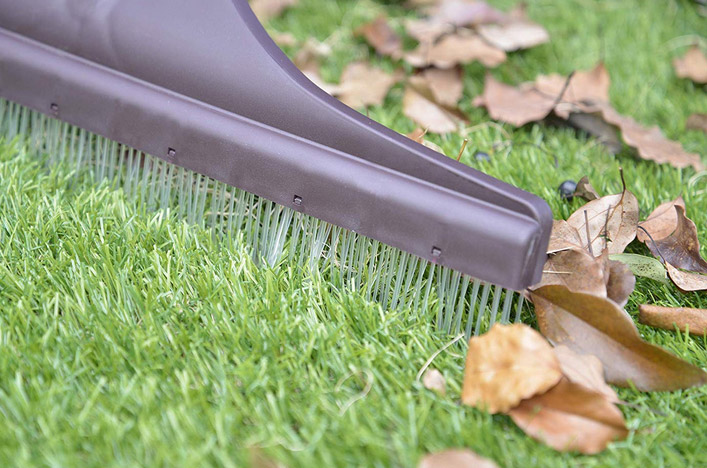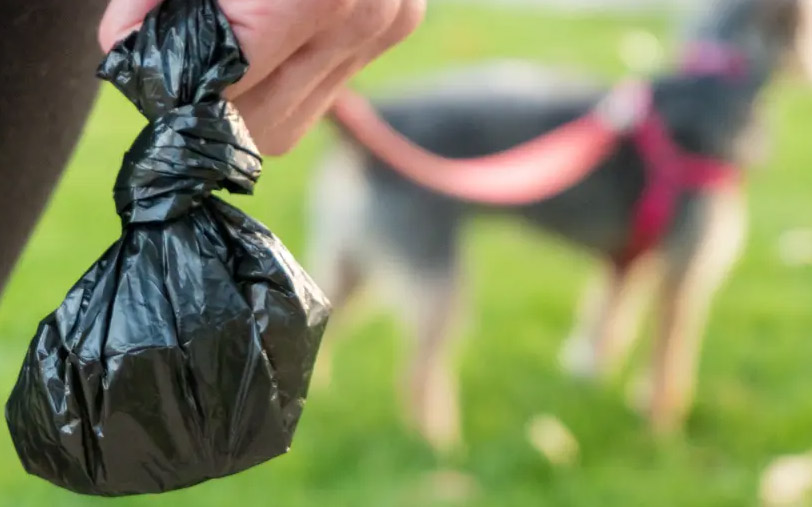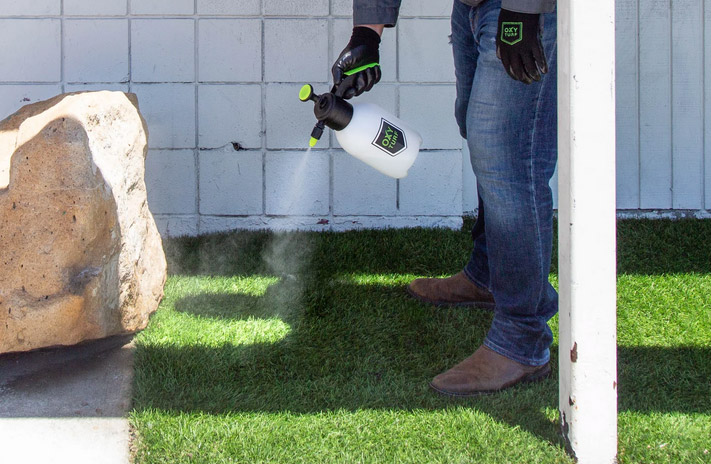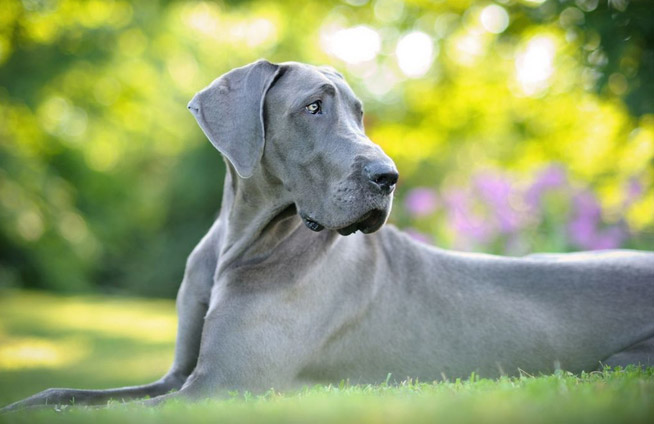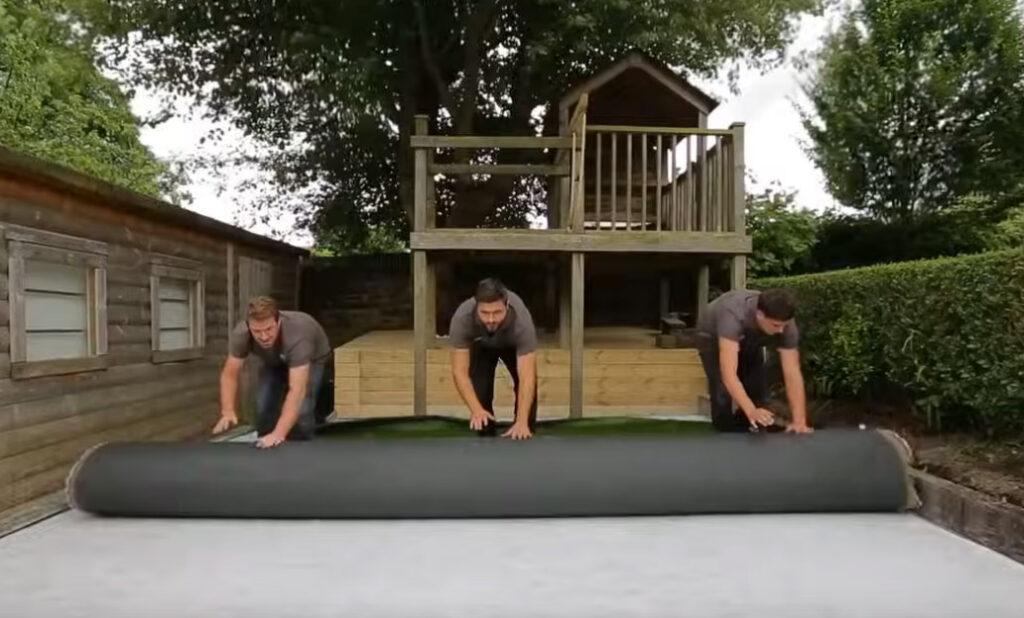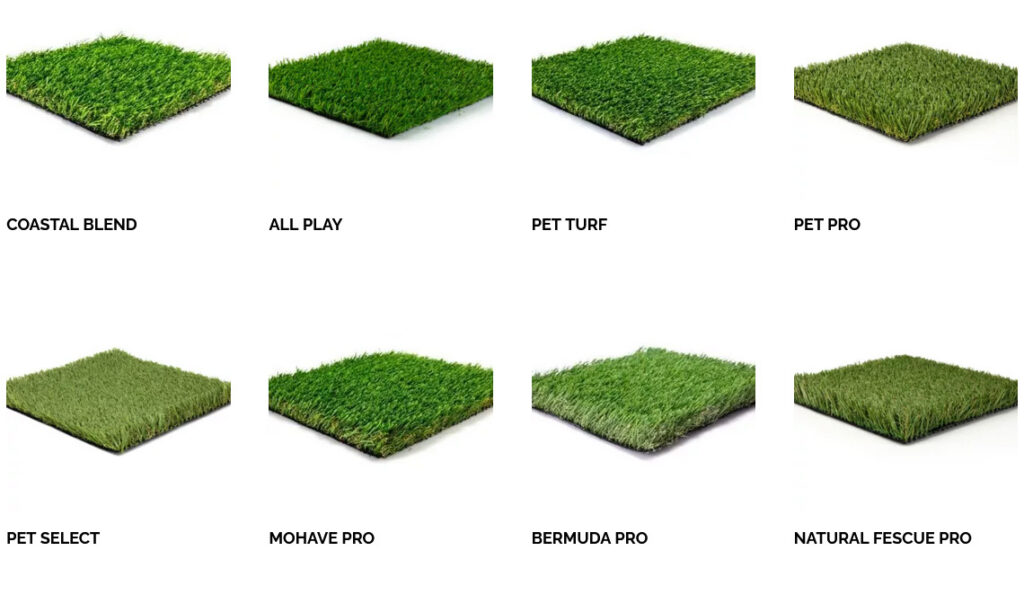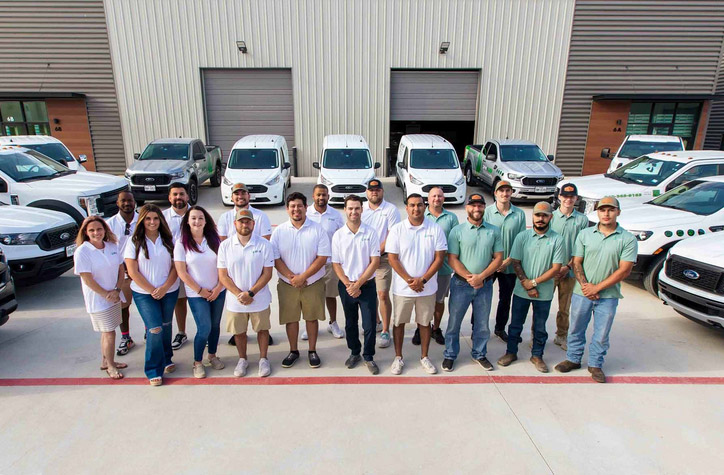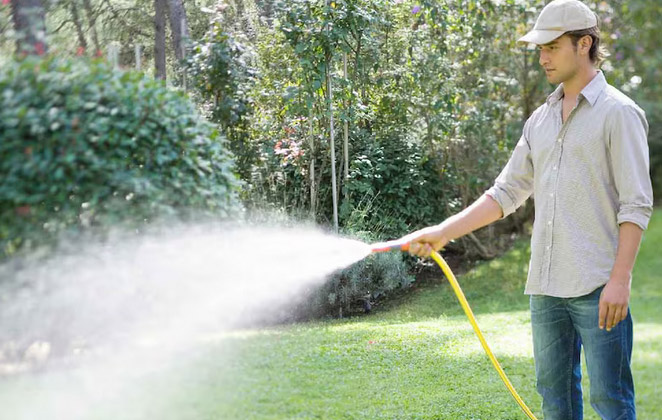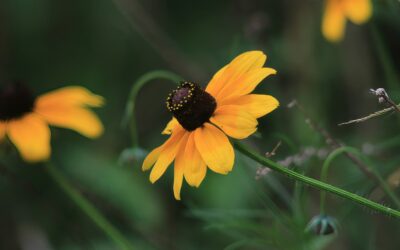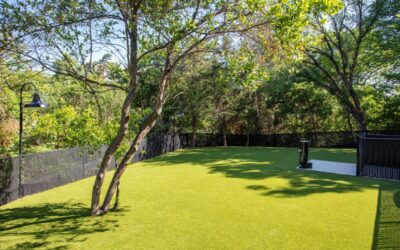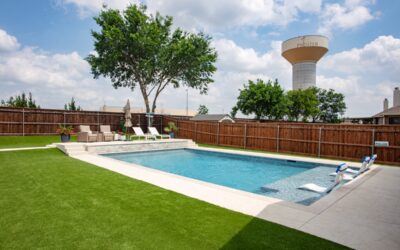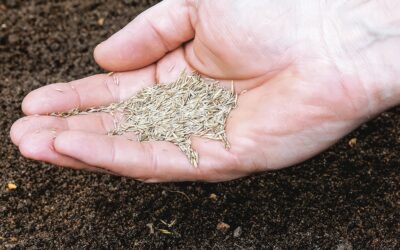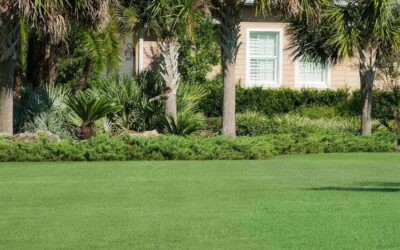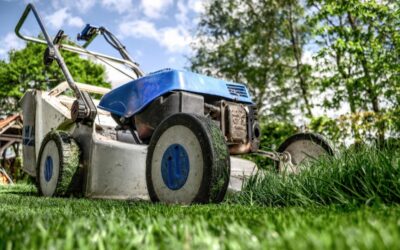The U.S. ranks in the top 10 of dog ownership per capita in the world. That means a lot of dogs—and a lot of dog smells to contend with for homeowners.
If you have pet turf installed in the yard and it constantly reeks of dog pee, something’s wrong.
Dogs should be able to pee on artificial grass if it’s been installed properly by professionals. In fact, that’s just one of many benefits of turf for homeowners who switch from real grass.
Important factors like the size of dog(s) and whether they pee in the same place each day, as well as drainage and the type of infill used, will affect the state of your artificial grass if you have dogs.
But if dog owners skip some basic maintenance measures, even the best artificial turf for dogs can lose its pet-friendliness and result in unpleasant odors, especially in hot and dry weather. This requires deep cleaning to neutralize the odors.
But where so you start?
Here’s what you need to know about deep-cleaning artificial grass for dogs…
Why does pet turf need deep cleaning?
Durable, low-maintenance, and verdant all year round, artificial grass is also highly cost-effective in the long term for dog owners. There’s no digging, mud, bald patches, potholes or yellow stains like with natural grass either—and artificial grass is stain-free if a few precautions are taken.
However, whether you run dog kennels or have a backyard dog run, a separate area of your lawn that your dog uses or your family shares the same patch of lawn with your dog, keeping it clean and free of nasty deposits, bacteria, and odors can be challenging. In particular, it’s quite easy for artificial turf to smell of dog urine unless a few precautions are taken.
Pet-friendly artificial grass backyard ideas abound but artificial grass is not maintenance-free if you have dogs. Pet owners must take care of their turf areas, especially if the family shares the space. Preventing unhygienic spaces requires some effort.
This is common sense—and a few basic cleaning steps can maintain a healthy, safe, and pristine area for your dog and the rest of your family…
How to clean artificial grass for dogs
Deep cleaning artificial grass for dogs means removing solid waste as soon as possible, cleaning the area with soapy water or an enzyme-based cleaner, occasionally rinsing with the garden hose (especially in hotter, drier months), and deodorizing using a spray.
We take a closer look at each of the cleaning steps below but, just before that, here’s the equipment you’ll need for the job.
- A plastic bag or pooper scooper
- A standard garden hose
- A mild soap and water solution for mild odor problems
- An enzyme-based cleaner for deeper odor problems
- A synthetic turf-safe brush (no metal prongs)
- Turf deodorizing spray
- Leaf blower (optional)
- A soft-bristle rake/brush
- A vacuum cleaner (optional)
All cleaning products used must be suitable for artificial grass (check the packaging and directions for use). Now, let’s look at how to use this cleaning equipment on artificial grass for dogs…
Pick up solid waste ASAP
Start by removing solid dog waste from the artificial turf. At the same time, remove any other obvious debris, which can look unsightly, attract bacteria, and clog the drainage system.
Use a plastic bag or poop scoop to collect the dog waste. For leaves and other vegetation on the lawn, you can use a leaf blower but this is optional. A soft-bristled rake or brush is equally as effective—though slightly more work.
You can use a vacuum cleaner on artificial grass but this should be done with some caution. Don’t use the vacuum if there are loose or damaged fibers, don’t use a stiff bristle brush (which could damage the turf), and beware of the suction sucking up much infill.
If in doubt, pick up debris by hand or use a leaf blower and remove dirt and dust by rinsing or cleaning the area as per the following steps…
Rinse the turf with the garden hose
Unlike natural grass, artificial grass needs no water to keep it green and lush—but an occasional rinse with a standard garden hose is good for it.
Rinsing will flush away liquid waste and small pieces of dirt, hair or other debris caught between the turf blades. This is especially beneficial in the drier months when rainfall doesn’t remove unwanted smells and substances from the turf surface.
Image Source
Note that a pressure hose can be used to remove more stubborn unwanted substances but it will also remove the infill, which will need replacing afterwards. You may want to top-up the infill after each rinse, regardless, as the infill keeps the turf blades standing upright and the turf looking realistic.
Spot-clean areas that need a deeper clean
Stubborn odors, debris, and waste may need further attention if the hose can’t remove them entirely.
How you spot clean will depend on the nature of the unwanted substance. With dogs, it could be solid poop that won’t budge or nasty pee odors.
Scrubbing the area with a turf-safe brush (plastic or nylon bristles rather than metal) and a mild soapy water mixture should work for most areas. Even dishwashing liquid will likely work. Some dog owners use a homemade vinegar and water mix too.
For a more thorough clean and a method to neutralize pee odors, use an enzyme-based cleaner that’s safe for artificial grass. This is usually sold as a concentrate that can be diluted with water—it’s best to use a container that attaches to the hose.
This type of bacterial cleaner will help to break down the uric acid, which causes the offensive ammonia odors, freshening up the area. Standard cleaners may not completely remove intense pee odors because uric acid is not water-soluble.
Usually, you must allow the cleaner to sit on the affected area for a while before rinsing away and allowing it to dry—but be careful to follow the directions for usage detailed on the container,
Note: Read about how to clean sticky or stubborn substances from artificial grass here.
Disinfect with a turf deodorizer
If you’ve removed dog waste, pee, and odors from your backyard lawn and want to ensure everything is hygienic, you can disinfect the area using a diluted household disinfectant. Follow the instructions when applying it and, if in doubt, test a small patch of pet turf first.
To avoid lingering odors from the disinfectant, use an antimicrobial pet deodorizer spray. Like enzyme-based cleaners, these will attack the root cause of the odors—urea—and prevent further bacterial growth.
How often should pet turf be cleaned?
This depends on the size of the space, the size and number of dogs, and how the artificial grass is used—as well as who installed it.
Besides regular inspections for dog waste and debris, a weekly rinse of your pet turf is beneficial in the hotter, drier months. At other times, a monthly rinse will help most spaces stay clean.
A single dog using a large backyard lawn will require far less frequent deep cleaning than an artificial grass area that is small and/or used by multiple large dogs.
If drainage is poor or there are other problems with the installation, weekly cleaning with antimicrobial, enzyme-based products and deodorizers may be required to tackle dog pee odors.
What if these cleaning steps don’t work?
If your dog pees every day in the same area—or multiple dogs all use the area every day—cleaning with the methods described may not be sufficient or may work only temporarily. You’ll need to repeat the above steps quite regularly or find another solution.
If the cleaning steps outlined don’t address the root cause of stubborn pee odors, it can feel like you’re fighting a losing battle. If the issue lies under the ground (like a poorly placed membrane) or with the type of infill used, the turf may need to be ripped up and re-laid to fully resolve the issue once and for all.
Pet owners should use turf with antimicrobial infill rather than sand or crumb rubber, which will retain dog pee and cause odors. A zeolite-based antimicrobial infill is recommended.
Three basic rules to prevent smelly pet turf
If you’re a dog lover considering switching to artificial turf from natural grass, don’t let the fear of dog pee odors prevent you. Follow three basic rules and you’ll be fine…
- Select the right grass: high-quality pet turf is designed to withstand anything your dog (or the elements) can throw at it. All turf installed by DFW Turf Solutions uses a highly permeable polyurethane backing that is non-absorbent, provides excellent drainage, doesn’t trap smells, and is washable.
- Install the turf professionally: preparing the ground properly for artificial grass is essential for any artificial grass installation but, with dogs, it’s even more critical to allow for good drainage. A professional installation team will also ensure that the correct antimicrobial infill is used.
- Look after your yard spaces: the third rule requires someone in the family to regularly inspect rinse, clean, and deodorize the artificial grass. Taking care of artificial grass with pets will keep it looking great while remaining clean and hygienic.
FAQs
Clean And Hygienic Pet Turf…
Keeping artificial grass clean is a little more challenging for dog owners than it is for others. But, with so many people in the U.S. owning a dog, it’s a common challenge.
Artificial turf is ultra-low-maintenance compared with real grass but you can’t neglect the basic cleaning steps outlined above if you want to keep your lawn looking and smelling pristine with dogs.If you’re experiencing cleaning problems with your artificial grass or are considering switching from real grass, speak to our experienced team of turf professionals. We’ve helped dog owners enjoy turf areas in their front, back, and side yards for many years…

